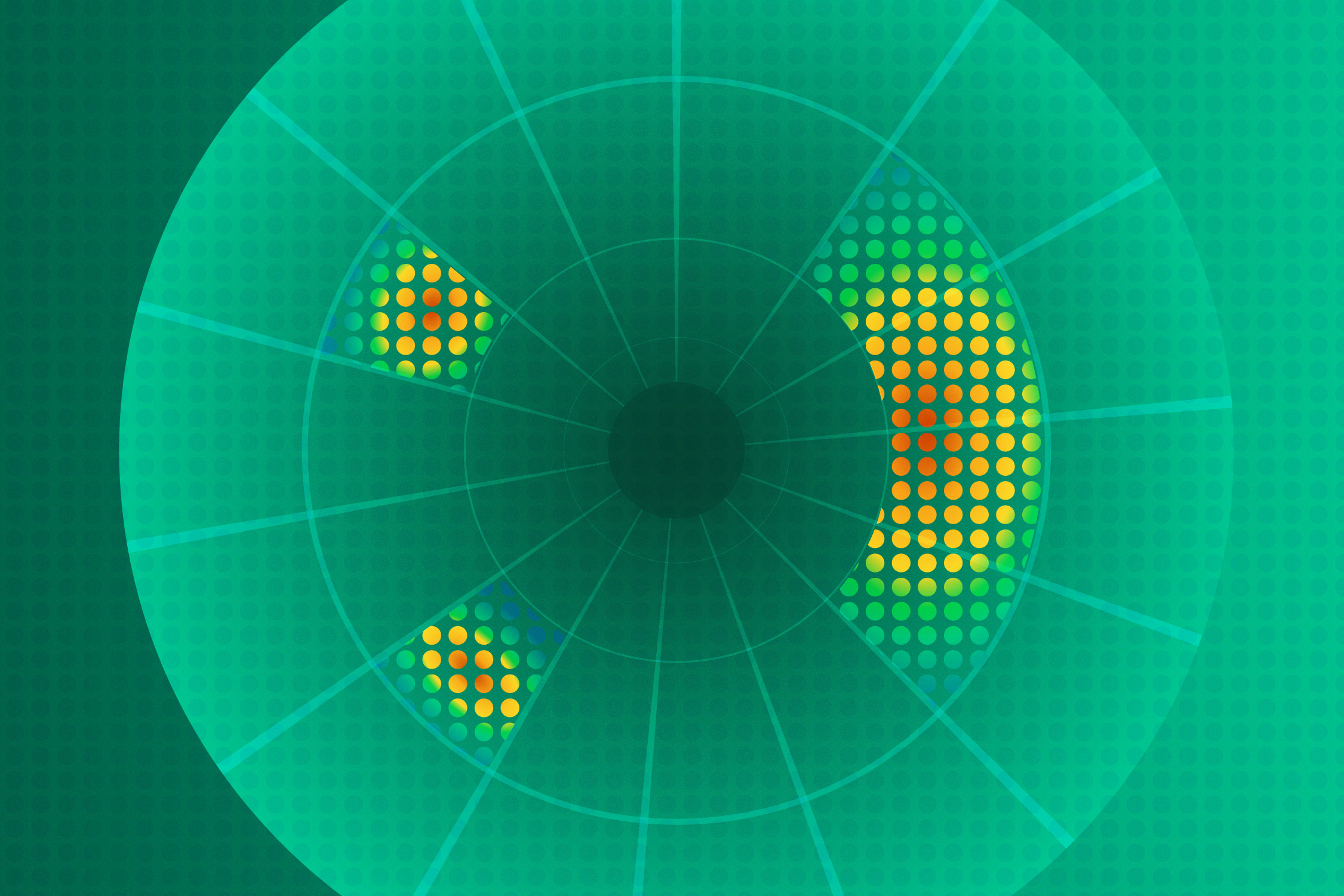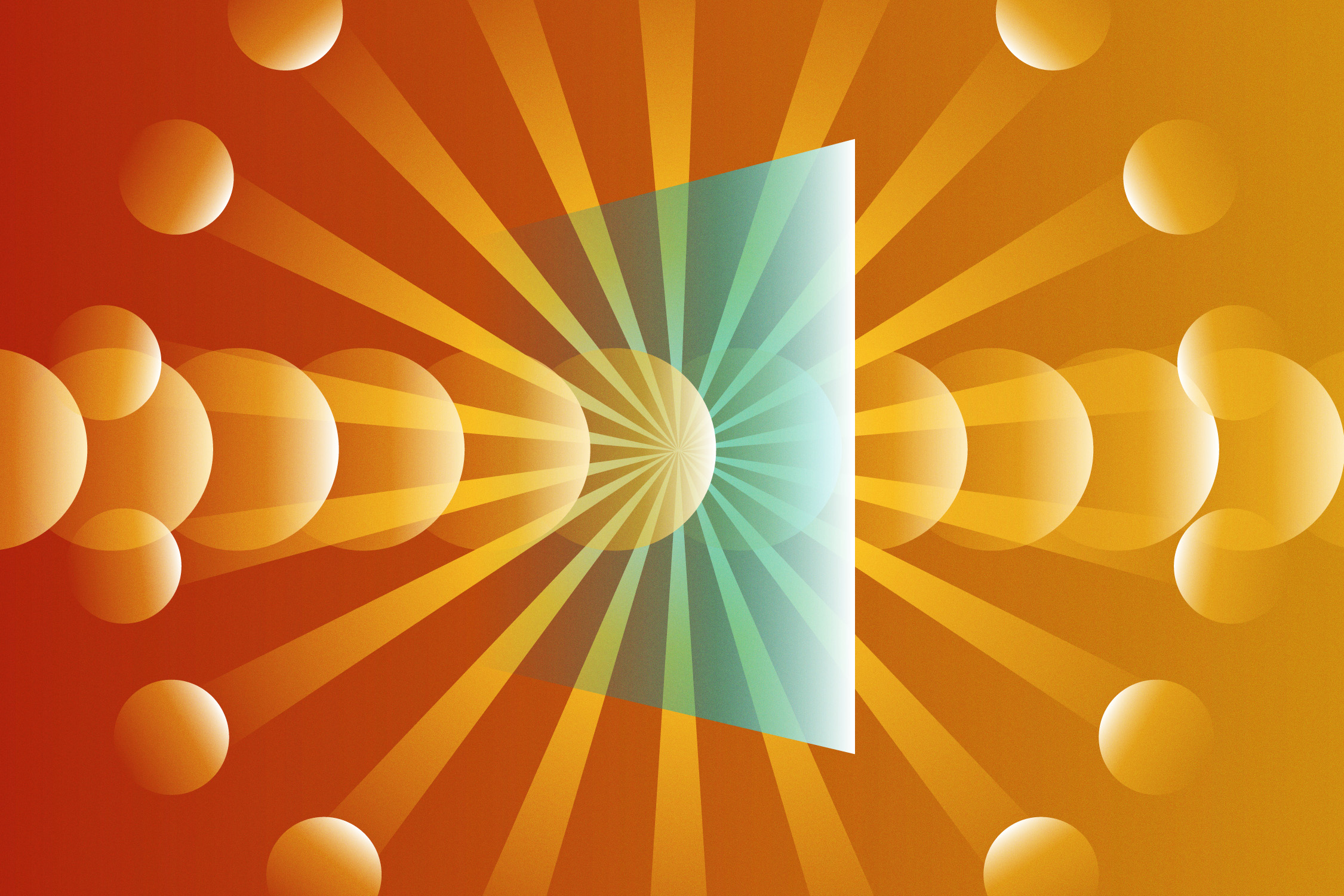Security Through Signatures
New technology to identify hazardous chemicals by their subtle atomic-level interactions
- Rebecca McDonald, Science Writer

Some dangers are easily hidden in plain sight. Consider an unlabeled three-ounce bottle of clear liquid: it could be water, it could be rubbing alcohol, or it could be something more hazardous. Is it safe to be shipped through the mail? Or taken aboard an airplane? Certain chemicals can be toxic if released into the air, so somehow the bottle’s contents need to be verified without removing the lid. Although current detection techniques are doing the job, recent advances in identifying chemicals by studying their atomic interactions could usher in a new level of scrutiny.
In 2010, Los Alamos physicist Michelle Espy and her team made headlines when they introduced a method of scanning travel bottles for liquid explosives using ultralow-field nuclear magnetic resonance (ULF-NMR). Nuclear magnetic resonance can be used to characterize atoms in molecules by measuring the response of their nuclei to a magnetic field. Although the two-step process was ultimately too slow for the impatient passenger queues at airport security, the team was onto something: small, portable, low-field magnets can be useful for detecting specific chemical compounds, and sometimes they can be even more useful than their high-field cousins.
In traditional NMR, strong magnetic fields cause the nuclei of atoms to align with the field. Then, a weaker oscillating magnetic field is applied to search for a resonant response from the nuclei, which occurs at an oscillation frequency that’s specific to the material being probed. Varying the strength of the primary (static) magnetic field can cause the nuclei to resonate at different frequencies depending on their exact chemical environment—a phenomenon referred to as chemical shift. These patterns of resonances can be used to identify the atoms in chemical compounds, but at very low magnetic fields, the chemical shift disappears and the signals get lumped together in a very narrow frequency range. However, upon closer examination, Espy and colleague Bob Williams discovered that for some compounds, the frequency signals are actually quite distinctive.
“We found that molecules containing a few specific elements have a unique fingerprint,” says Espy. And the fingerprints they discovered are especially helpful. Using fertilizers, insecticides, and related materials as surrogates, Espy, Williams, and their colleagues have used ULF-NMR to rapidly (less than 8 seconds) identify the fingerprints of chemical-threat agents in TSA-approved travel bottles, as part of a project supported by the Department of Homeland Security’s Science and Technology Directorate through an interagency agreement with Los Alamos.
These characteristic signals are caused by a phenomenon referred to as J-coupling, which happens when the nuclei of neighboring atoms in molecules begin to interact, or couple, with each other when the magnetic field is applied. For instance, one may expect a compound containing two hydrogen-carbon bonds to show two distinct hydrogen signal peaks, but if they are coupled, the peaks will instead split into four smaller ones. What’s fascinating is that although high magnetic fields can detect these unique J-coupled signatures, they are much richer at very low field—in fact, the lower the better.
“Using advanced electronics that are now available, we are able to see these interactions using only the earth’s 50-microtesla magnetic field,” says Williams, a bio-organic chemist. (A magnetic field of 50 microteslas is tens of thousands of times weaker than that used by a typical medical MRI machine.)
Williams explains that although J-coupling has been used for many years to determine chemical structures, it has never before been done with magnetic fields this low. Low fields mean smaller magnets and the potential for a whole new level of portable chemical detection.








